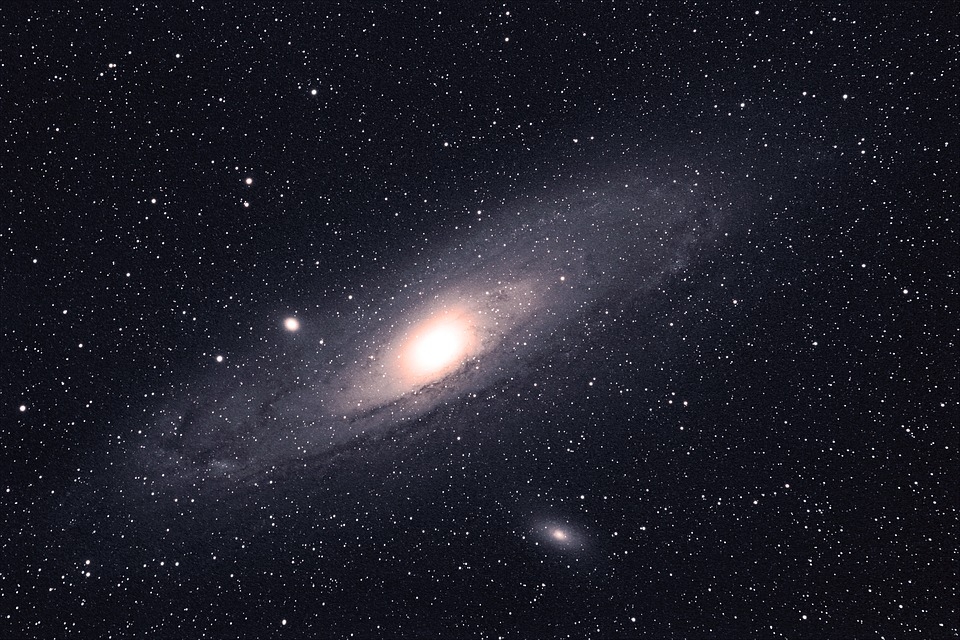2020 marks NASA and ESA’s Hubble Space Telescope’s last run before retiring in 2021, but not before capturing more stunning space phenomena while it is still roaming around the universe. Recently, NASA’s scientists discovered a halo around the neighboring Andromeda galaxy through the Hubble.
Express reports the Hubble found a nearly undetectable halo made out of diffused plasma spanning 1.3 million light-years, halfway into our own Milky Way galaxy, and belonging to the neighboring Andromeda galaxy. This means that Andromeda’s plasma halo is already touching our own galaxy’s halo. NASA scientists also found that the halo has a few layers with two shells of gas.
“This reservoir of gas contains fuel for future star formation within the galaxy as well as outflows from events such as supernovae. It’s full of clues regarding the past and future evolution of the galaxy, and we’re finally able to study it in great detail in our closest galactic neighbor,” said Samantha Berek of Yale University who is also the co-investigator of the study.
The study’s leader Nicolas Lehner from the University of Notre Dame, explained that the inner shell of the halo spans 500,000 light-years while the outer shell is smoother and hotter.
Previously, the Hubble was also able to capture the remnants of a supernova shockwave. In photos shared by NASA, the shockwave came from the Cygnus constellation and appear in the photo as orange wisps across the universe. The agency’s scientists also found that the explosion that resulted in the discovery of this shockwave by the Hubble occurred 20,000 years prior and located 2,400 light-years away from Earth.
The blast is still traveling through space at a rate of hundreds of miles per hour. According to the European Space Agency, this supernova explosion was caused by a star that is 20 times larger than our own Sun. It should be noted that supernovae explosions fall into one of two categories.
Type I explosions usually take place between binary stars that orbit one common point. Should one of the two stars be a white dwarf made of carbon-oxygen, then it will consume material from the other star which will result in its mass growing bigger. It explodes when it hits critical mass. Type II explosions however, happen when a star runs out of nuclear fuel.



 Customizing mRNA is easy, and that's what makes it the next frontier for personalized medicine − a molecular biologist explains
Customizing mRNA is easy, and that's what makes it the next frontier for personalized medicine − a molecular biologist explains  Orbital resonance − the striking gravitational dance done by planets with aligning orbits
Orbital resonance − the striking gravitational dance done by planets with aligning orbits  Genetic diseases: How scientists are working to make DNA repair (almost) a piece of cake
Genetic diseases: How scientists are working to make DNA repair (almost) a piece of cake  Tatahouine: 'Star Wars meteorite' sheds light on the early Solar System
Tatahouine: 'Star Wars meteorite' sheds light on the early Solar System  What is minoxidil, the anti-balding hair growth treatment? Here’s what the science says
What is minoxidil, the anti-balding hair growth treatment? Here’s what the science says  The mystery of consciousness shows there may be a limit to what science alone can achieve
The mystery of consciousness shows there may be a limit to what science alone can achieve  Why some people don't trust science – and how to change their minds
Why some people don't trust science – and how to change their minds  The brightest object in the universe is a black hole that eats a star a day
The brightest object in the universe is a black hole that eats a star a day  Eggs from men, sperm from women: how stem cell science may change how we reproduce
Eggs from men, sperm from women: how stem cell science may change how we reproduce  Alpha, beta, theta: what are brain states and brain waves? And can we control them?
Alpha, beta, theta: what are brain states and brain waves? And can we control them?  Could a telescope ever see the beginning of time? An astronomer explains
Could a telescope ever see the beginning of time? An astronomer explains  Six space missions to look forward to in 2024
Six space missions to look forward to in 2024  Why now is the time to address humanity’s impact on the moon
Why now is the time to address humanity’s impact on the moon  The brain is the most complicated object in the universe. This is the story of scientists’ quest to decode it – and read people’s minds
The brain is the most complicated object in the universe. This is the story of scientists’ quest to decode it – and read people’s minds  How do airplanes fly? An aerospace engineer explains the physics of flight
How do airplanes fly? An aerospace engineer explains the physics of flight 





























